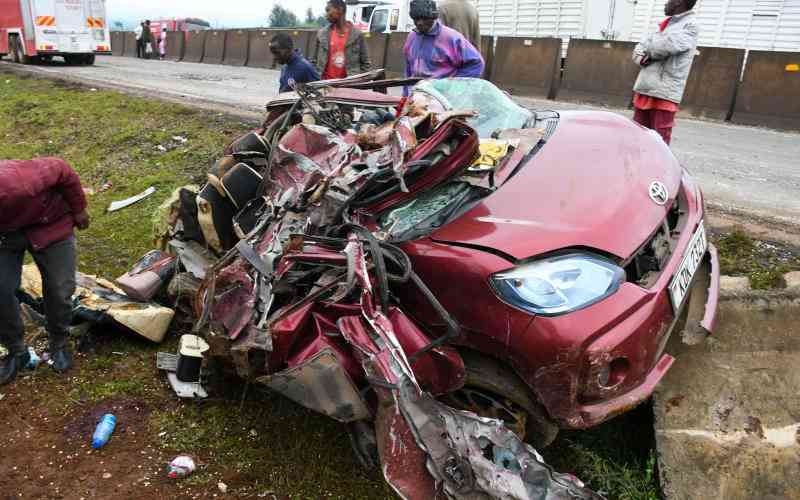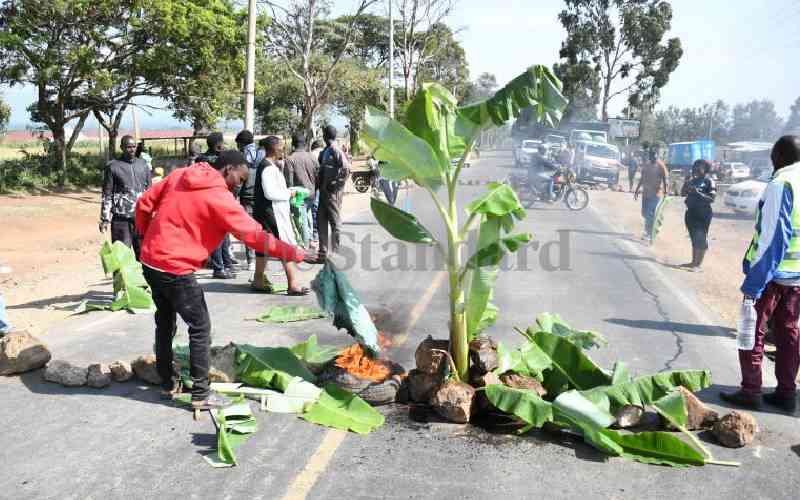
In a bizarre incident, police have been forced to turn to science to determine the true owner of two cows allegedly stolen five years ago and recovered this month in Nakuru County.
Rongai Sub County Police boss Richard Rotich told The Saturday Standard that they were in a tight spot because two farmers laid claim on two Friesian cows found on the Nakuru-Eldoret Highway on August 10 this year.
Ann Cherotich had reported theft of her two Friesians in August 2015 at Ngata Police Post with OB Number 4/27/8/2015.
On the other hand, Gloria Kandie who was found in possession of the animals presented sale agreements and two witnesses from whom she claimed to have bought them at different times in 2019.
Presented with two stories with no evidence to ascertain who was speaking the truth, police resorted to science.
“The cows have striking resemblance and we couldn’t immediately determine who the owner was. We had to call in a doctor to give us a report on the two cows since one farmer claimed one of the cows was a calf of the other,” said Rotich.
Perhaps to strengthen her case, Cherotich presented to the police her mother who used to take care of the animals, a man who dehorned them, her private veterinary officer who served one of the cows and a Nyumba Kumi elder. After physical examination, they all agreed the cows were hers.
Dental formula
The police, however, could not solely rely on their narratives.
To find a credible middle ground, Cherotich and Kandie agreed to seek the services of a government veterinary officer whose scientific report will be correlated with their statements recorded at the station.
Rongai Sub County Veterinary Officer Peter Ngugi (pictured) took charge of the process which was undertaken at Baraka Patrol Base.
He explained that the age determination which in this case borders DNA tests in humans would help determine which farmer had given a true account on the history of the animals.
“The process involves checking on the dentition, tail switch and general body marks. From the dentition and the length of the tail switch we shall be able to determine their age. We shall then correlate with the details which include their dates of birth given by the two farmers,” said Ngugi.
Ngugi said the age of a cow determines the number of teeth it has and their extent of wearing out.
Stay informed. Subscribe to our newsletter
“Dentition is the most accurate method. A two-year-old cow has two permanent incisors, a three-year-old has four, a four year old has six while a five year old and above has eight. At the age of eight years the teeth start wearing out and get spaced,” said Ngugi.
Having determined the age of the two cows which appeared the same size, Ngugi said: “We shall be able to tell whether the one Cherotich’s claims to be the calf of the other is true based on age.”
The process was, however, not as easy. The doctor together with his assistants wrestled to control the animals, count the teeth and take photographs as part of the evidence.
“I have collected all the necessary data from the two animals. A report will be ready within 24 hours and submitted to the police for action,” said Ngugi.
Rotich said once the report is received, the matter will be expedited.
“It shall be a blessing to have science help us solve such a case. If we establish they were stolen we shall track down the alleged sellers,” said Rotich.
 The Standard Group Plc is a
multi-media organization with investments in media platforms spanning newspaper
print operations, television, radio broadcasting, digital and online services. The
Standard Group is recognized as a leading multi-media house in Kenya with a key
influence in matters of national and international interest.
The Standard Group Plc is a
multi-media organization with investments in media platforms spanning newspaper
print operations, television, radio broadcasting, digital and online services. The
Standard Group is recognized as a leading multi-media house in Kenya with a key
influence in matters of national and international interest.
 The Standard Group Plc is a
multi-media organization with investments in media platforms spanning newspaper
print operations, television, radio broadcasting, digital and online services. The
Standard Group is recognized as a leading multi-media house in Kenya with a key
influence in matters of national and international interest.
The Standard Group Plc is a
multi-media organization with investments in media platforms spanning newspaper
print operations, television, radio broadcasting, digital and online services. The
Standard Group is recognized as a leading multi-media house in Kenya with a key
influence in matters of national and international interest.






